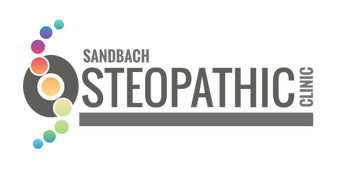Exploring the Benefits of Dry Needling in Osteopathy
In the realm of alternative and complementary therapies, dry needling has gained popularity as a valuable technique in the field of osteopathy. Often mistaken for acupuncture due to its use of thin needles, dry needling is a distinct therapeutic approach that offers numerous benefits for musculoskeletal conditions. This article aims to shed light on what dry needling is and how it can benefit individuals seeking relief from various pain and mobility issues.
Understanding Dry Needling
Dry needling is a specialized technique within the scope of osteopathic practice that involves the insertion of fine, sterile needles into specific trigger points, also known as myofascial trigger points, within muscles and connective tissues. These trigger points are knots or tight bands of muscle fibers that can cause pain and discomfort when compressed or contracted.
Unlike acupuncture, which is rooted in traditional Chinese medicine and focuses on balancing the body's energy flow (Qi), dry needling operates on a Western medicine-based understanding of neuroanatomy and physiology. The primary goal of dry needling is to elicit a mechanical, biochemical, and physiological response that promotes the release of muscle tension and triggers the body's natural healing mechanisms.
How Dry Needling Works
During a dry needling session, a skilled osteopath inserts thin, solid needles directly into trigger points, aiming to cause a local twitch response in the muscle. This involuntary twitching is believed to release tension within the muscle fibers, increase blood circulation to the area, and stimulate the body's production of natural pain-relieving chemicals like endorphins and enkephalins.
Additionally, the insertion of needles can disrupt dysfunctional neuromuscular patterns, encouraging the muscles to return to their optimal state of function. By targeting specific trigger points, dry needling aims to alleviate pain, improve joint mobility, and restore overall musculoskeletal balance.
Dry needling is a specialized technique within the scope of osteopathic practice that involves the insertion of fine, sterile needles into specific trigger points, also known as myofascial trigger points, within muscles and connective tissues. These trigger points are knots or tight bands of muscle fibers that can cause pain and discomfort when compressed or contracted.
Unlike acupuncture, which is rooted in traditional Chinese medicine and focuses on balancing the body's energy flow (Qi), dry needling operates on a Western medicine-based understanding of neuroanatomy and physiology. The primary goal of dry needling is to elicit a mechanical, biochemical, and physiological response that promotes the release of muscle tension and triggers the body's natural healing mechanisms.
How Dry Needling Works
During a dry needling session, a skilled osteopath inserts thin, solid needles directly into trigger points, aiming to cause a local twitch response in the muscle. This involuntary twitching is believed to release tension within the muscle fibers, increase blood circulation to the area, and stimulate the body's production of natural pain-relieving chemicals like endorphins and enkephalins.
Additionally, the insertion of needles can disrupt dysfunctional neuromuscular patterns, encouraging the muscles to return to their optimal state of function. By targeting specific trigger points, dry needling aims to alleviate pain, improve joint mobility, and restore overall musculoskeletal balance.
Benefits of Dry Needling in Osteopathy
- Pain Relief: One of the primary benefits of dry needling is its effectiveness in reducing pain associated with musculoskeletal issues. By releasing tension in trigger points, individuals often experience immediate relief from muscle soreness, chronic pain, and tension headaches.
- Improved Range of Motion: Dry needling can help improve joint mobility and flexibility by reducing muscle tightness and promoting better muscle coordination. This, in turn, allows individuals to move more freely and comfortably.
- Faster Recovery: Athletes and active individuals often turn to dry needling to accelerate their recovery from injuries. The technique aids in reducing inflammation, improving blood circulation, and promoting tissue healing, leading to quicker recovery times.
- Complementary Treatment: Dry needling can be used in conjunction with other osteopathic techniques such as manual therapy, exercise, and education. This holistic approach addresses various aspects of a patient's condition, enhancing the overall effectiveness of treatment.
- Non-Invasive: Compared to invasive procedures, dry needling is minimally invasive and does not involve the use of medication. This makes it a suitable option for those seeking natural, drug-free solutions to their musculoskeletal issues.
Dry needling stands as a promising technique within the realm of osteopathy, offering a range of benefits for individuals seeking relief from pain, improved mobility, and enhanced quality of life. Through its targeted approach to trigger points and its focus on Western medicine principles, dry needling has gained recognition as a complementary therapy that aligns well with the holistic philosophy of osteopathic practice. For those looking to explore non-invasive options for addressing musculoskeletal issues, dry needling is certainly worth considering under the guidance of a qualified osteopath.
Nina Vasco offers dry needling within osteopathy sessions. To book, please click the button below.
Nina Vasco offers dry needling within osteopathy sessions. To book, please click the button below.
THE CLINIC |
Osteopathy |
|
